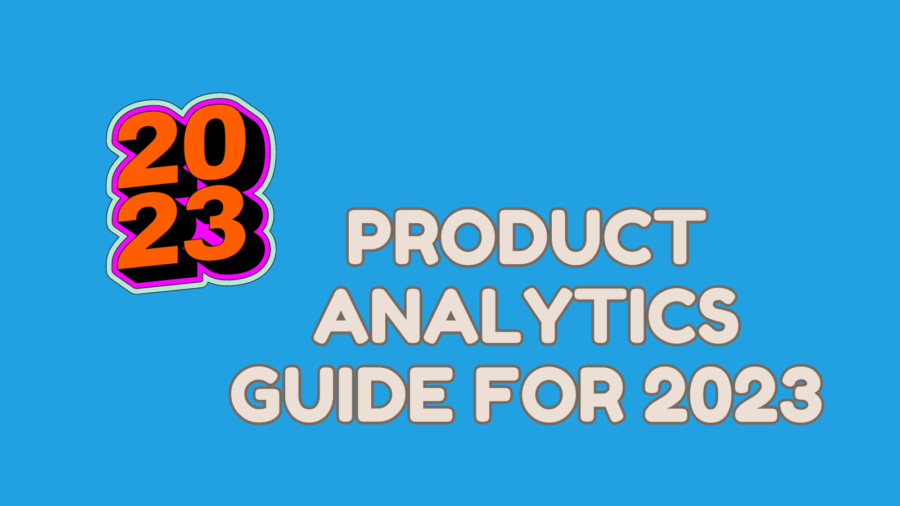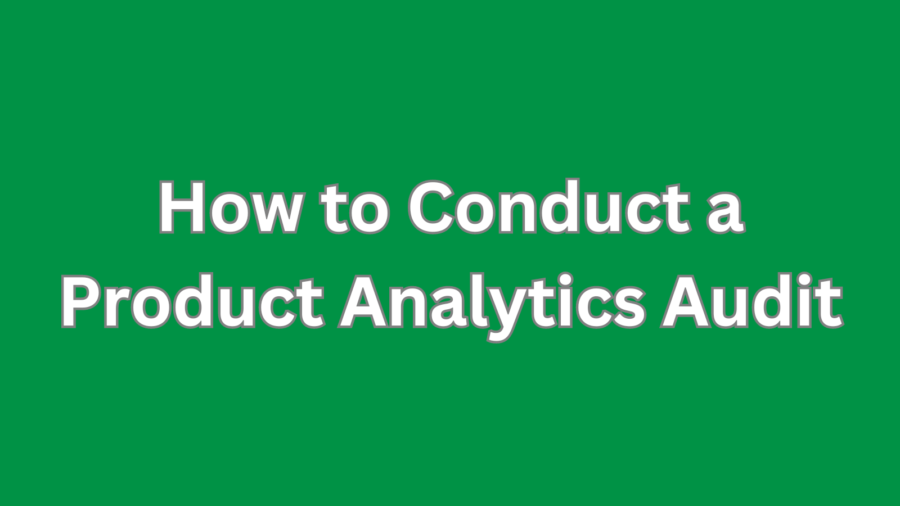Product analytics has become indispensable for companies seeking to understand and optimize their products’ performance. Creating an effective data tracking plan for product analytics is crucial to gather valuable insights, make informed decisions, and enhance the overall user experience. In this comprehensive guide, we will walk you through the process of building a robust data-tracking plan that aligns with your product goals and objectives.
1. Define Product Goals and Objectives
To lay the foundation for a successful data tracking plan, it’s essential to have a clear understanding of your product’s goals and objectives. What problem does your product solve, and what outcomes are you trying to achieve? Understanding your product’s purpose will guide you in determining the key performance indicators (KPIs) that you need to track.
For example, if you are launching a mobile fitness app, your primary objective might be to increase user engagement and retention. In this case, your KPIs could include daily active users (DAU), weekly active users (WAU), and monthly active users (MAU), along with measuring user interactions within the app, such as workout completion rates and social sharing activity.
2. Identify Key Metrics
Once you have defined your product’s objectives, the next step is to identify the key metrics to help you measure your progress toward those goals. These metrics, often referred to as Key Performance Indicators (KPIs), should be directly linked to the success of your product and provide meaningful insights into user behavior and product performance.
For instance, if one of your product goals is to improve user engagement, relevant metrics might include time spent on the app per session, the number of sessions per user per day, and the percentage of users who complete specific onboarding actions. On the other hand, if your focus is on product conversion, metrics like conversion rate, churn rate, and customer lifetime value would be more relevant.
3. Understand User Journey
An integral part of building a data tracking plan for product analytics is gaining a thorough understanding of your user’s journey. Mapping out the various touchpoints users have with your product, from the first interaction to conversion and beyond, will provide you with valuable insights into how users interact with your product.
By understanding the user journey, you can identify critical user actions and milestones contributing to your product’s success. For example, in an e-commerce website, the user journey might involve stages like product discovery, adding items to the cart, completing the purchase, and post-purchase support. Each stage presents an opportunity to track user interactions and gather data on user preferences and behaviors.

4. Choose the Right Data Tracking Tools
Selecting the appropriate data tracking tools is crucial for accurate and efficient data collection in product analytics. Numerous product analytics platforms are available, each with strengths and features. When choosing a tool, consider factors such as data accuracy, real-time reporting capabilities, scalability, and ease of integration with your existing systems.
Some popular product analytics tools include Google Analytics, Mixpanel, Amplitude, and Heap. Google Analytics, for example, provides robust website and mobile app tracking capabilities, while Mixpanel focuses on event-based tracking and cohort analysis. Evaluating your specific tracking needs and understanding the capabilities of each tool will help you make an informed decision.
5. Implement Event Tracking
Event tracking is a fundamental aspect of product analytics, as it allows you to monitor user interactions and actions within your product. Defining the events you want to track is crucial for capturing relevant data points that align with your product goals and objectives.
For instance, in a SaaS product, important events might include user sign-ups, feature usage (e.g., video views, document uploads), and subscription renewals. By implementing event tracking, you gain visibility into how users engage with different features and identify areas where improvements can be made to enhance user experience and increase retention.
6. Utilize User Segmentation
User segmentation is a powerful technique that allows you to categorize your user base based on specific attributes or behaviors. By dividing users into meaningful segments, you can gain deeper insights into user preferences, pain points, and patterns of behavior. This information enables you to effectively tailor product features and marketing strategies to different user groups.
Segmentation can be based on various criteria, including demographics (age, location, gender), user type (e.g., free trial users versus paying customers), geolocation, or user engagement level (e.g., high, medium, low). Analyzing each segment separately can help you understand how different user groups interact with your product and identify opportunities for personalized experiences and targeted improvements.
7. Analyze User Feedback
While quantitative data is essential for product analytics, incorporating qualitative data through user feedback is equally valuable. User surveys, feedback forms, and customer support interactions can provide unique insights into user satisfaction, pain points, and feature requests.
Analyzing user feedback lets you understand the “why” behind user behavior and complements the “what” from quantitative data. For instance, if you notice a drop in user engagement through product analytics, qualitative feedback might shed light on users’ issues or uncover opportunities for enhancing certain product features.
8. Monitor Product Performance Over Time
Effective data tracking doesn’t stop at implementation; it requires ongoing monitoring and analysis. Set up regular reporting and analysis processes to track product performance over time. By monitoring product analytics consistently, you can identify trends, patterns, and any significant changes in user behavior.
Regular reviews of your data tracking plan also provide an opportunity to reassess your product goals and KPIs. As your product evolves and business priorities change, ensure that your tracking plan remains aligned with your current objectives. Flexibility and adaptability are crucial in product analytics to keep pace with the dynamic nature of the market and user needs.
9. A/B Testing and Experimentation
A/B testing and experimentation are powerful methods to optimize product performance. These methodologies involve testing different variations of features, designs, or user interfaces to gather data on which changes lead to better outcomes.
By conducting systematic A/B tests, you can make data-driven decisions about product improvements, prioritizing those that positively impact key metrics. Experimentation also allows you to uncover potential growth opportunities and innovate based on user preferences and behaviors.
10. Ensure Data Privacy and Compliance
As you track product data, it is essential to prioritize data privacy and comply with relevant regulations such as GDPR, CCPA, or other data protection laws. Protecting user data and ensuring secure data practices are critical for maintaining customer trust and building long-lasting relationships.
Implement data anonymization and encryption where necessary, and educate your team on best practices for handling user data responsibly. Transparency with users about data collection and usage is also crucial in establishing trust and fostering a positive user experience.
Conclusion
Creating an effective data tracking plan for product analytics is a multi-faceted process that requires a deep understanding of your product, user base, and business objectives. By defining clear goals, choosing the right metrics, implementing robust tracking tools, and continuously monitoring product performance, you can gather valuable insights to make informed decisions and drive product success.
Remember to prioritize data privacy and user consent to maintain trust and build long-lasting relationships with your customers. With a well-structured data tracking plan, you can unlock the full potential of your product, optimize user experiences, and gain a competitive edge in the market. Embrace data-driven decision-making, and let product analytics guide your journey towards product excellence.




